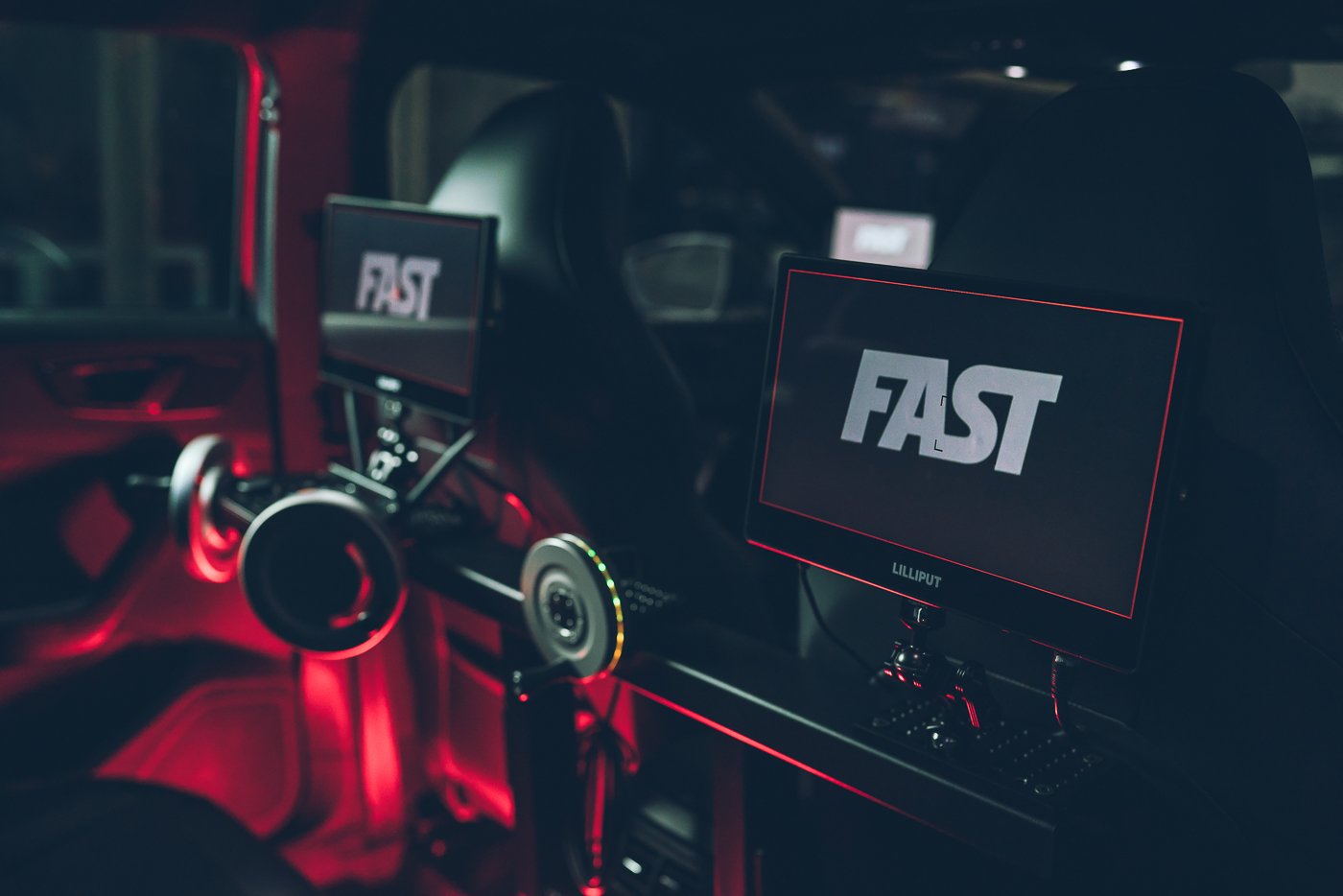Behind the Camera Car with We Are FAST
Behind the Camera Car with We Are FAST
During the pandemic lockdown, Barcelona-based company, We Are FAST decided to spend three months making a camera car. The finished car is incredible—and we think it beautifully integrates the Inertia Wheels. We reached out to FAST to bring you an inside look at the making of their camera car:
NODO: How did We Are FAST get into camera cars?
FAST: Our company specializes in cameras in motion. We use drones, camera cars, quads, EVs, motorbikes, etc. We started as two companies: Motor Option (focused on camera cars) and Flying Free Films (focused on drones). After many years in the industry, we combined to become FAST (Film, Action, Sport, Team) and dominate terrestrial and aerial camera chasing.
We have several vehicles, but our best camera car is our newest: a Cupra Ateca 350HP mounted with an Ultra from Motocrane.
NODO: How did you select this car?
FAST: We wanted to use a car that was made in Spain. SEAT and its related brand Cupra are Spanish manufacturers who produce high-performance cars with nothing to envy from more prominent brands like Mercedes or Porsche. They're popular camera cars in Spain, and especially in Barcelona.
NODO: How did you modify it?
FAST: We created a special structure inside (including rear-facing seats) to mount levers, monitors, and other useful gear.
Added inside cabling and monitors
Upgraded to limited-edition Brembo racing brakes
We have a special snorkel to guide cables from inside the car to outside to connect our camera and crane.
Added roof bars for cranes and pipes, as needed.
NODO: What was the biggest challenge when building your camera car?
FAST: We weren't able to drill anything into the car. So no cable holes, mounting holes, or any permanent modifications. It’s a rental car, so we had to get creative with what we had. We were able to adapt all our systems thanks to our mechanical engineers.
NODO: What gear is the most important to you in a camera car build?
FAST: We like to think of it working your way back from the camera to the operator:
Gimbal
Vibration systems
Arm: can be as simple as a Black Arm or big as an Ultra arm
Connections: video and power cabling
Control: monitors, joysticks, wheels
And finally, comfort for the operators
The most important thing is that it's all safe and great to look at. We want to offer an incredible and safe experience for DPs, directors, and clients.
NODO: What made you decide to use the Inertia Wheels in your camera car?
FAST: A few things make the Inertia Wheels work really well in camera cars:
Compact size
Digital screen looks and functions amazingly
Flexibility with support for Ronin 2 and Movi XL (both of which we use)
Powerful features with quick keys and software tools like shake effects
NODO: Tell us a bit about why you have the Third Axis mounted where it is.
FAST: We use the Third Axis primarily for gimbal roll. The Third Axis is in the middle of the car to allow the director or an assistant to control roll while the operator can pan and tilt. Separating the wheel from the main console, prevents the operator from unintentionally bumping it when the car moves. It’s really important to be able to move the Third Axis around and mount it where we need it.





